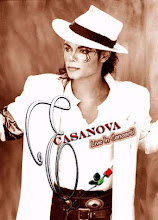Postwar disclosures
While it is obvious why Britain and the United States went to considerable pains to keep Ultra a secret until the end of the war, it has been a matter of some conjecture why Ultra was kept officially secret for 29 years thereafter, until 1974. During that period the important contributions to the war effort of a great many people remained unknown, and they were unable to share in the glory of what is likely one of the chief reasons the Allies won the war—or, at least, as quickly as they did.
At least three versions exist as to why Ultra was kept secret so long. Each has plausibility, and all may be true. First, as David Kahn pointed out in his 1974 New York Times review of F.W. Winterbotham's The Ultra Secret, after World War II the British gathered up all the Enigma machines they could find and sold them to Third World countries, confident that they could continue reading the messages of the machines' new owners.[18]
A second explanation relates to a misadventure of Winston Churchill's between the World Wars, when he publicly disclosed information obtained by decrypting Russian secret communications; this had prompted the Russians to change their cryptography, leading to a cryptologic blackout. The third explanation is given by Winterbotham, who recounts that two weeks after V-E Day, on 25 May 1945, Churchill requested that former recipients of Ultra intelligence not divulge the source or the information that they had received from it, in order that there be neither damage to the future operations of the Secret Service nor any cause for the Allies' enemies to blame Ultra for their defeat.[19]
Since it was British and, later, American message-breaking which had been the most extensive, this meant that the importance of Enigma decrypts to the prosecution of the war remained unknown. Discussion by either the Polish or the French of Enigma breaks carried out early in the war would have been uninformed regarding breaks carried out during the balance of the war. Nevertheless, the 1973 public disclosure of Enigma decryption in the book Enigma by French intelligence officer Gustave Bertrand generated pressure to discuss the rest of the Enigma–Ultra story.
The British ban was finally lifted in 1974, the year that a key participant on the distribution side of the Ultra project, F.W. Winterbotham, published The Ultra Secret.
The official history of British intelligence in World War II was published in five volumes from 1979 to 1988. It was chiefly edited by Harry Hinsley, with one volume by Michael Howard. There is also a one-volume collection of reminiscences by Ultra veterans, Codebreakers (1993), edited by Hinsley and Alan Stripp.
As mentioned, after the war, surplus Enigmas and Enigma-like machines were sold to many countries around the world, which remained convinced of the security of the remarkable cipher machines. Their traffic was not so secure as they believed, however, which is of course one reason the British and Americans made the machines available. Switzerland even developed its own version of the Enigma, the NEMA, and used it for decades (at least into the late '70s).
Some information about Enigma decryption did get out earlier, however. In 1967 the Polish military historian Władysław Kozaczuk in his book Bitwa o tajemnice (Battle for Secrets) first revealed that the German Enigma had been broken by Polish cryptologists before World War II. The same year, David Kahn in The Codebreakers described the 1945 capture of a Naval Enigma machine from U-505 and mentioned, somewhat in passing, that Enigma messages were already being read by that time, requiring "machines that filled several buildings."
Ladislas Farago's 1971 best-seller The Game of the Foxes gave an early garbled version of the myth of the purloined Enigma. According to Farago, it was thanks to a "Polish-Swedish ring [that] the British obtained a working model of the 'Enigma' machine, which the Germans used to encipher their top-secret messages."[20] "It was to pick up one of these machines that Commander Denniston went clandestinely to a secluded Polish castle [!] on the eve of the war. Dilly Knox later solved its keying, exposing all Abwehr signals encoded by this system."[21] "In 1941 [t]he brilliant cryptologist Dillwyn Knox, working at the Government Code & Cypher School at the Bletchley center of British code-cracking, solved the keying of the Abwehr's Enigma machine."[22]
By 1970 newer, computer-based ciphers were becoming popular as the world increasingly turned to computerised communications, and the usefulness of Enigma copies (and rotor machines generally) rapidly decreased. It was shortly after this, in 1974, that a decision was taken to permit revelations about some Bletchley Park operations.
The United States National Security Agency retired the last of its rotor-based encryption systems, the KL-7 series, in the 1980s.
Tuesday, April 7, 2009
Subscribe to:
Post Comments (Atom)

No comments:
Post a Comment